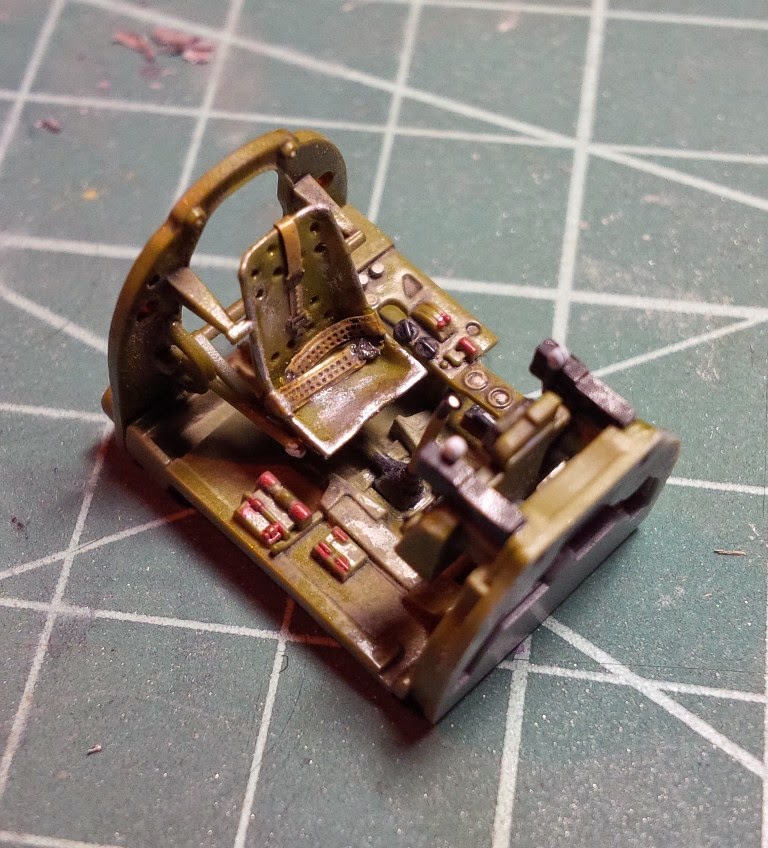While most of the publications in the previous posts are out-of-print there are a number of very good Japanese publications currently in-print.
The first Gakken publication on the Zero in their "Taiheiyo Senshi Sirizu" (Pacific War History Series) was released in September 1996 and was number #12. 190 pages detailing the history and development of the Zero with 86 b/w photos, the MM cockpit illustrations by Takani-san, a splendid fold-out colour illustration of Zero Ace Tanimizu Takeo by Watanabe Rikyu and various other detailed illustrations. A first effort by Gakken, different than all the others focusing more on the historical aspect of the Zero than satisfying the modellers' needs.
In November 2001 Gakken released their second book on the Zero, number #33. 181 pages with 62 vintage photos, nine very cool in flight photos of restored Zero plus 16 of Zeros in museums, 12 CG illustrations by Hosaka Muneo & Harada Keiji plus three pages of illustrations by Ibukuro Toyohiko. There is a most interesting fold-out with drawings detailing the fuselage changes of the 12-shi Carrier Fighter and MOST IMPORTANTLY a reproduction and short analysis of the "Kenkyu Jiken Seiseki Hokoku - Kugiho 0266 - Zero-shiki Kansen Meisai ni Kansuru Kenkyu" (Research Test Record Report - Navy Research Arsenal Report No 0266 - Report about the Camouflage of Type Zero Carrier Fighter) of February 1942 with the original colour chips. AFAIK this is a source highly overlooked by Zero colour experts who greatly rely on photocopies of photocopies...but I may be wrong. ALSO IMPORTANTLY this publication includes a report by Komine Bunzo on the final Zero Model, the A6M8 or an A6M5 variant, with an original factory illustration showing the cowling with the protruding scoop. This illustration is always very conveniently forgotten when some talk about how model companies are duped by "fake" photos. Just sayin'...
The third Zero publication by Gakken was released in August 2003 as a special edition entitled "Zero-Sen Perfect Guide". Another historical publication with plenty of photos and illustrations detailing the various Zero models but of little use to non-Japanese speaking modellers.
In December 1999 Kojinsha released one the best Zero publications, of excellent printing quality full of vintage photos called simply "Zero Fighter". It has 168 pages, 211 vintage b/w photos and 21 colour photos of a/c in museums. Although less exhausting than the FAOWs regarding the number of photos, their printing quality is much higher and there are a few photos never published anywhere else. Modellers with only passing interest might not be that satisfied though as it offers nothing else but high quality photos.
Bunrindo came back in 2008 with a publication called "Nihon Kaigun Zero-shiki Kanjo Sentoki" (Japanese Navy Type Zero Carrier Fighter). It includes most of the material in the 1995 Green Arrow publication minus the numerous colour photos. More technical, a little bit about colour, not so many vintage photos...It wouldn't be necessary but for the immediate availability as, AFAIK, is in-print and much easier to find than the Green Arrow.
The majority of the Green Arrow colour photos though were included in the smaller size "ZERO Fighter Watching" by Kojinsha in 2005.
Finally the publication with the most original and photo exhausting collection was originally published by Bunkeishunju in 2001 as a h/b and again in 2013. Title: "Tatakau Zero Sen" (Fighting Zero Fighter) 192 pages, only one name: Watanabe Yoji. Check HERE for more.

In conclusion, for an average modeller with only passing interest, I would recommend the "Zero Fighter Watching" because it's cheap, handy and detailed enough (combine it with the "In Action"). For a skilled modeller on the other hand MA#847 (Profile #12) and MA#857 (Profile #13) are good enough and add FAOW Special #6 for more vintage reference photos. If the modeller is more demanding and is looking for more original subjects, "Tatakau Zero-sen" provides plenty of inspiration.
I hope this presentation helped. Feel free to ask clarifying questions and leave comments telling us what you think about these books if you have any of them.





























































